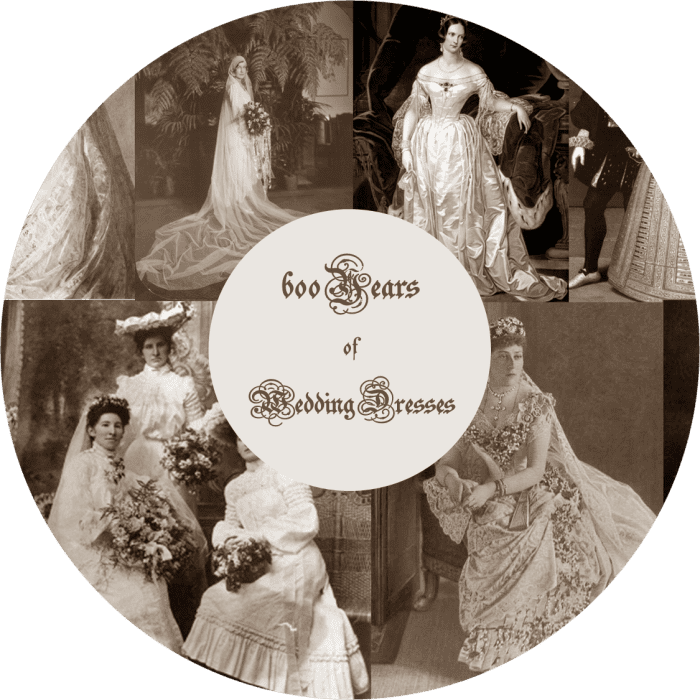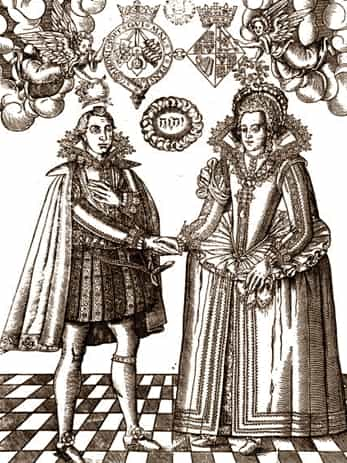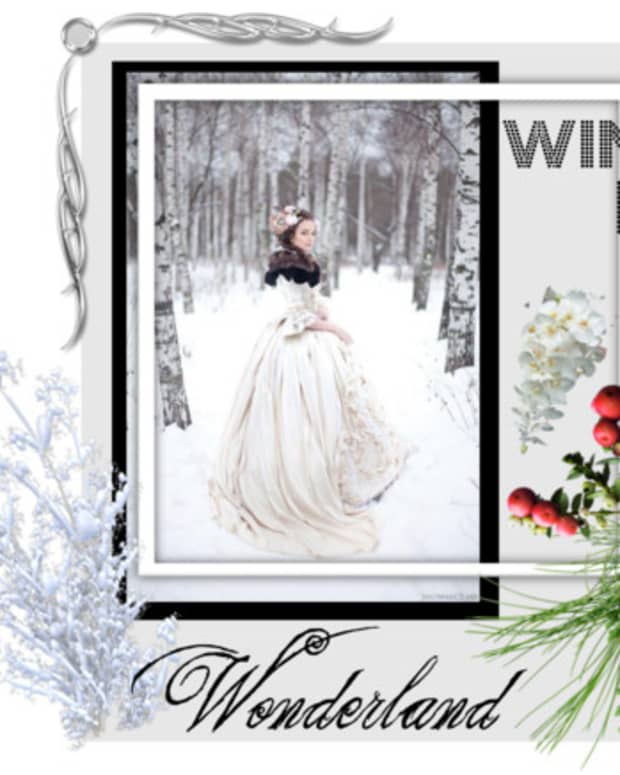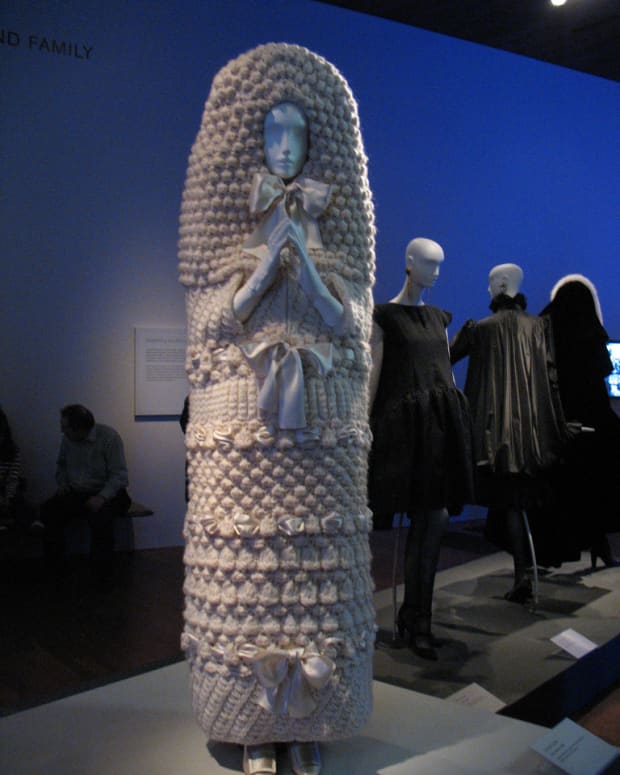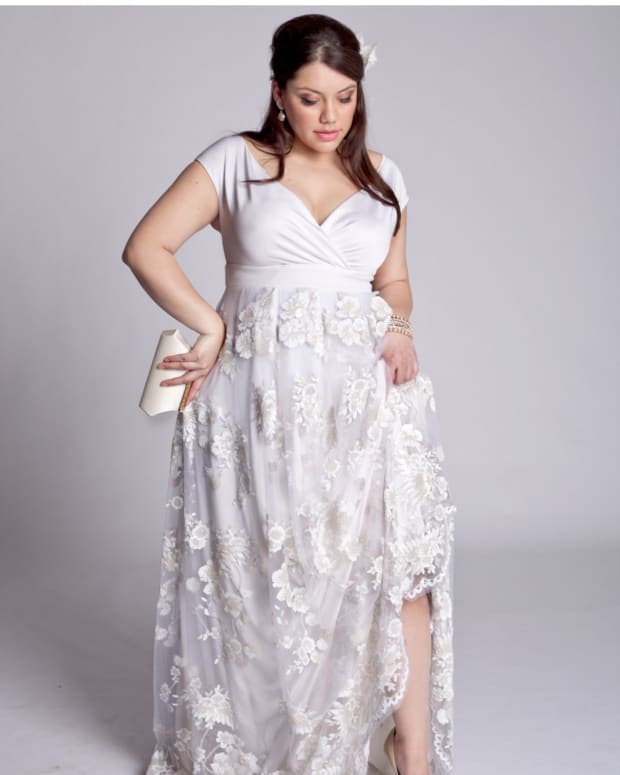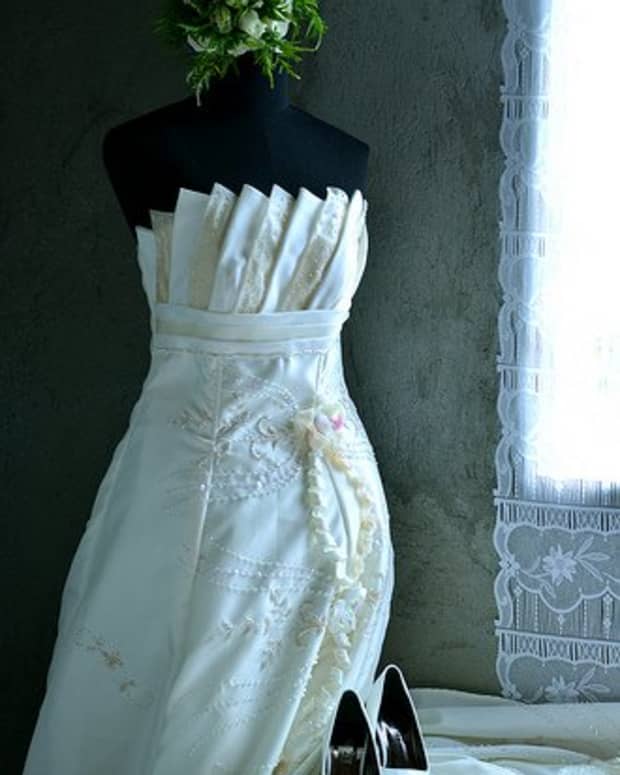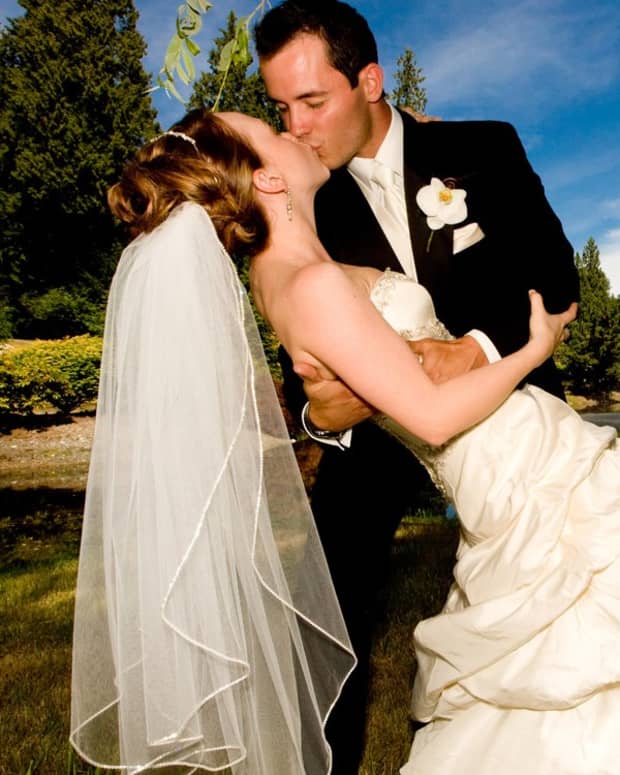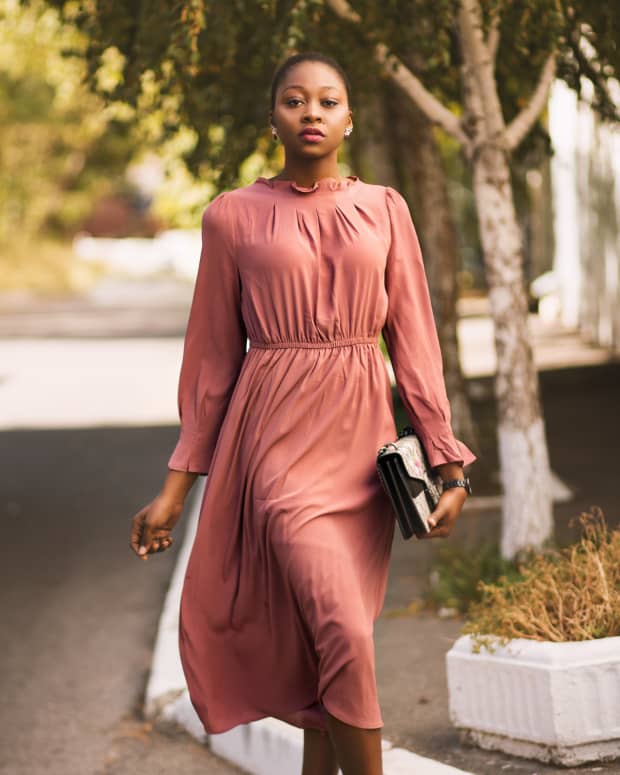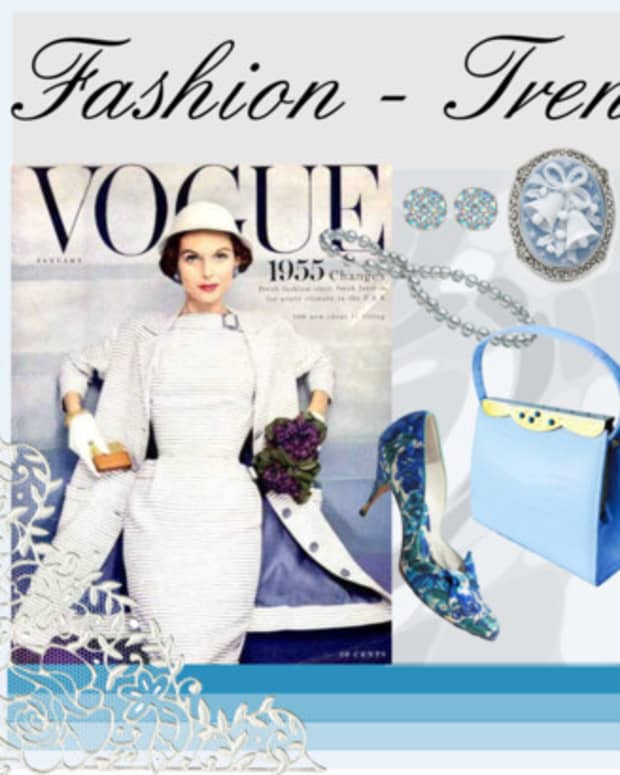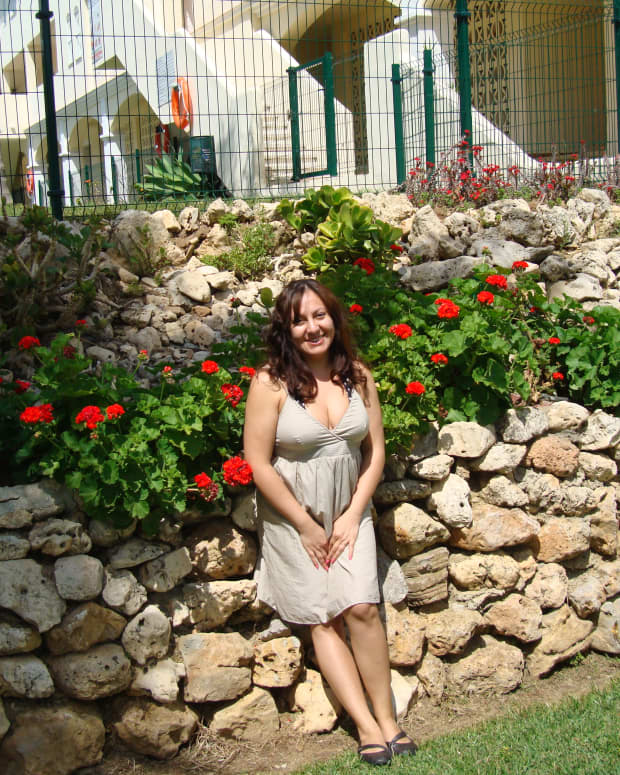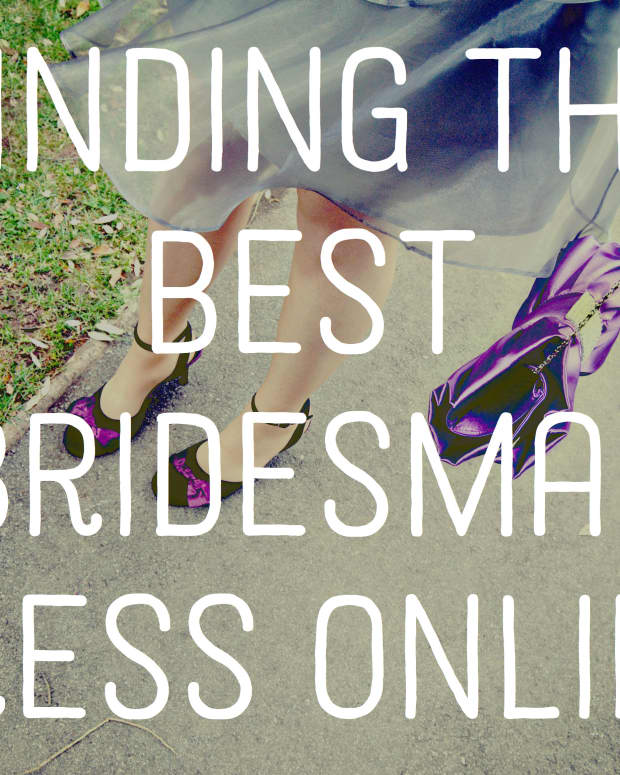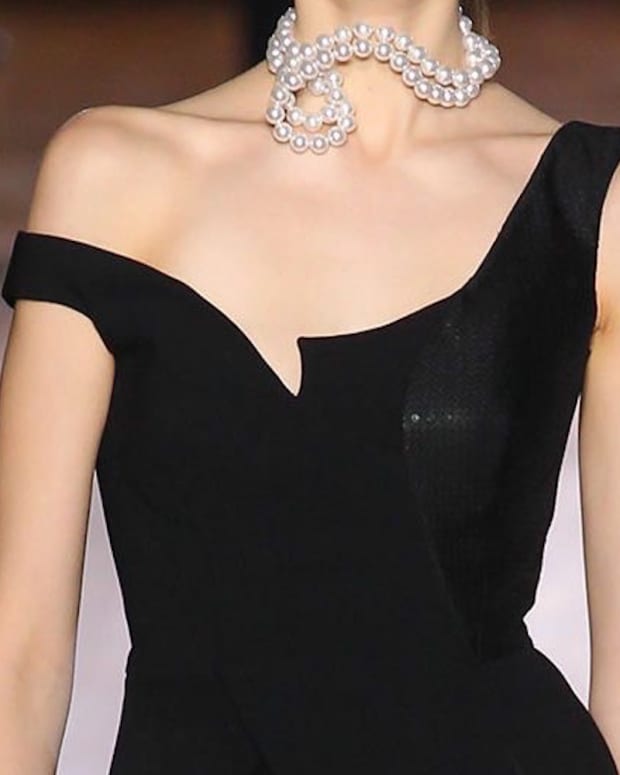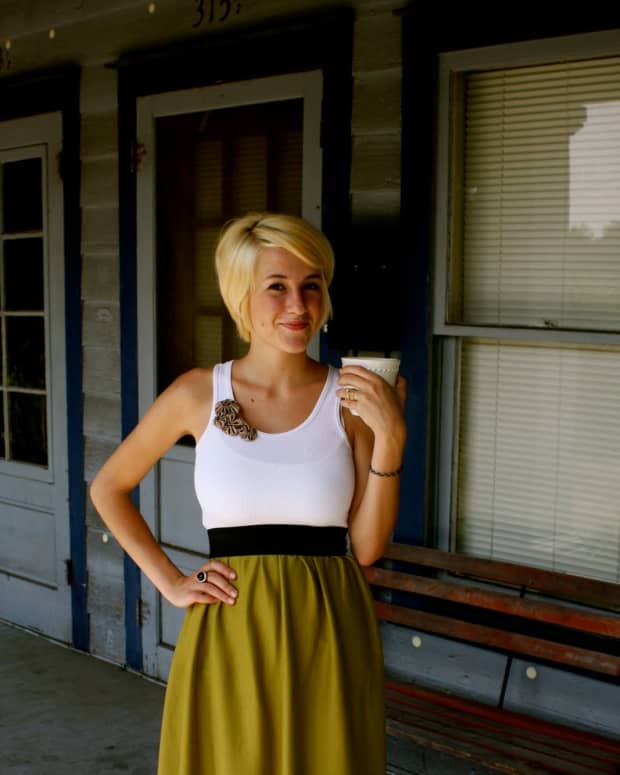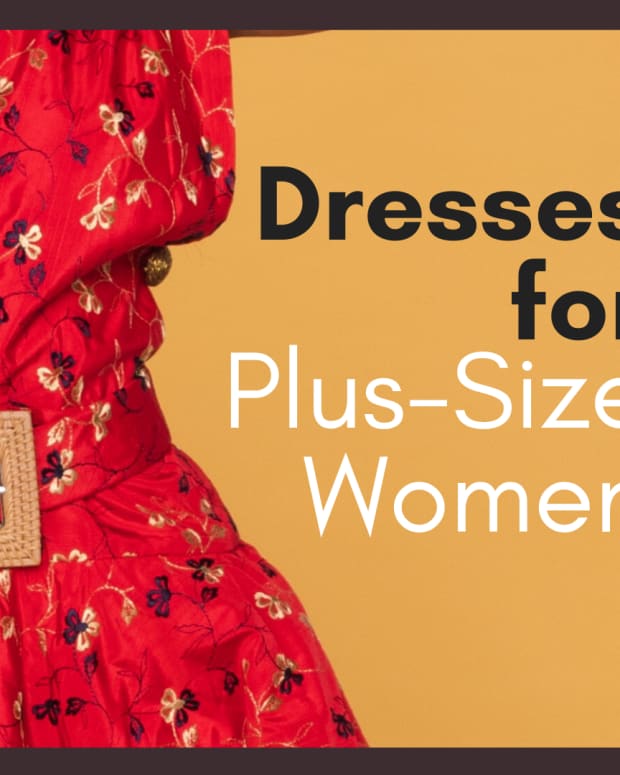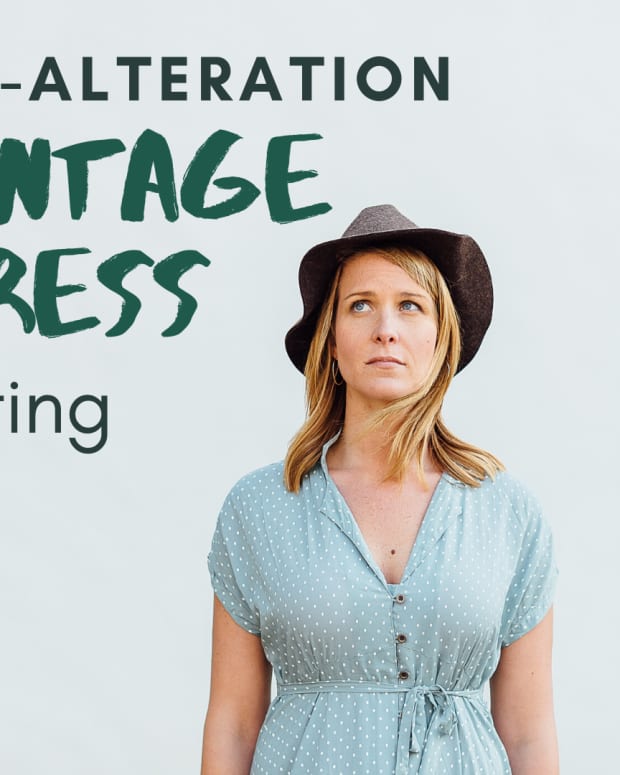600 Years of Wedding Dress Styles
From the Middle Ages style to the present day, the history of fashion is not only intriguing, it is fascinating and inspiring to many of us.
History of Wedding Gown Styles
Classic styles of wedding gowns still hold an attraction for antique and vintage fashion enthusiasts. Old-chic, coupled with the air of fantasy, fascinates many brides who desire to re-live the past in a modern-day setting.
Wearing special bridal dresses for weddings did not come into effect until the 19th century when ceremonious wedding traditions of the medieval times gave birth to modern wedding customs. The rituals of joining two people together in matrimony never required anything special unless perhaps you are of royal stock.
For most of history, there were no wedding gown styles as such. Brides rarely had a dress made specifically for her wedding. All that she had to wear was her best dress for the ceremony, and there were no specific colours either.
At the time, brides wore black, brown, or such dark colours with only a few exceptions. Colours like green or yellow were considered unlucky; remember the myth, “Marry in yellow, ashamed of your fellow.” The commoners wore dark colours because they hid stains and imperfections.
Later, blue became the popular choice because it represented purity and piety with a connection to religion and the Virgin Mary. And though gowns made in white can be traced to the early 1400s, it was not popularized until 1840 during the wedding of Queen Victoria, where she wore an elaborate white dress. It soon inspired a following. By then, white wedding gowns became the most befitting colour for wealthy brides.
Now, most wedding dress colours are white, eggshell, ecru, or ivory. Not necessarily because they are a symbol of wealth, purity and virginity, but because the colour has become a lasting trend.
The 1300s to 1400s
Both men and women of the 14th century wore a garment known as a cotehardie, a floor-length, form-fitting gown with an open, wide neckline and full length (or elbow-length) sleeves. They probably featured some form of patterns like damask or stripes that were usually two-toned.
By the 1400s, wedding gowns of wealthy medieval brides were hand-sewn in fabrics like satin, velvet, and silk and came in deep rich tones of blue, red, and gold. Blue was a popular colour because it signifies virginity and purity. Wedding gowns for brides from the lower class were made from cheaper fabrics like cotton, wool, or linen. They were usually dark or muted colours with styles that were copies of the designs of the wealthy.
Lower-class brides would copy the style of noblewomen as much as possible with dresses made out of inexpensive fabrics such as cotton and linen.
The first documented instance of a noble wearing a white wedding gown was in 1406 England. At the time, Philippa of England wore a tunic with a cloak made in white silk and bordered with grey squirrel and ermine fur.
Nuptials Attire of the 1500s to 1600s
During the Elizabethan era, the middle-class bride would wear her best gown and kirtle, and if she could afford it, she may sew a new dress. Wedding gown styles were full-length and would cover most of the body except where it had a plunging neckline. The wealthy made their gowns with luxury fabrics like velvet, corduroy and satin; the lower-class made theirs from flax, wool, and cotton.
Colours came in a variety of different shades: for the less privileged, red, blue, greens, white, grey, black, orange and tan were the usual hues of bridal dresses. The wealthier brides had their gowns adorned with jewels and gold and silver threads.
The outfits were worn with cloaks most times. The necklines and cuffs, decorated with linen or silk ruffs (crimped or pleated collars or frills), were usually full and wide.
White wedding gowns were not the custom colour at the time, but in 1559, Mary, Queen of Scots, wore a white wedding gown in 1559 when she married her first husband, Francis Dauphin of France. The only reason why she did is that white was her favourite colour.
The 1700s to 1800s Bridal Gowns
Before the Victorian Era, when white wedding gowns became popularized by Queen Victoria in 1840, a bride had the choice to wear any colour she desired, including black. A decade later, white became the traditional colour for bridal gowns.
Wedding gown fabrics were satin, silk, tulle, organdy, linen, and gauze-like materials. The more elaborate and pricier gowns were made from lace, just like the Queen Victoria wedding dress.
The earliest Victorian style wedding gowns came with a fitted bodice, small waist, and a full skirt. The skirts (bustle style) were voluminous and plumped up with undergarments like petticoats and hoops; inner-wear worn extensively at the time.
The mid-Victorian era brought an emergence of middle-class wealth, and the wealthy gladly exhibited their new riches. At this time, around the 1870s, bridal wear designed by Frederick Worth in Paris was the ultimate status symbol! For those who could least afford it, the bustle styles were copied.
By the late Victorian period, the bustle style disappeared; shorter trains and bigger sleeves became the trend, and the veil became the standard bridal wear. Widows who remarried did not wear pure white. They wore shades of white, like ivory, including salmon, lavender, rose, or violet and satin dresses trimmed with ostrich feathers.
1900s Edwardian Brides
At the turn of the century, the Edwardian era, the styles of wedding gowns were charming, at best. They were lavishly styled, elegant, soft and often pricey, with very long flouncy trains, sometimes over seven feet long. They were generally adapted to the trending styles of the day and were sewn with lots of trimmings like embroidery, lace, or frills.



Although the original vintage wedding gowns were mostly made from cotton batiste and soft cream-white satin, today's version of the Edwardian bridal dress can be made with light to medium weight fabrics such as satin, taffeta, voile, crepe de chine, or batiste.
Edwardian style wedding gowns had a characteristic high lace collar neck, nipped waist, big and bold leg-o-mutton sleeves, full sweeping skirt, and plenty of lace detail. Today, recognised as vintage wedding gowns, the style is still popular for its representation of pure classic feminine beauty. Remember the “Gibson Girl” look? It was an Edwardian style.
Read More From Bellatory
The 1920s to 1930s Bride
By the 1920s, the flapper style became a hot trend. Usually cut loose, it was a ‘flirty and sexy’ style shift-dress that drops straight down the body, rather than display curves like wedding dresses of the previous era. By the mid-20th century, wedding gowns were almost always white and remain so until today.
The 1940s and 1950s Styles Wedding Dresses
In the 1950s, wedding dresses became a high fashion affair and most brides wanted to dress just like the silver screen stars. Audrey Hepburn, Marilyn Monroe, Grace Kelly, and Debbie Reynolds were the rave at the time. The popular styles they inspired had sweetheart necklines, small waists, and full layered skirts. The hour-glass silhouette was the rave.
Tea and full length strapless bridal gowns with matching lace, silk or satin bolero jackets and three-quarter length sleeves were also worn for the ceremony. It was not acceptable to wear sleeveless wedding gowns until the 1960s.
Bridal Fabrics
There was a wide variety of fabrics for bridal wear ranging from man-made textiles to natural fibre fabrics. They include ribbed silks, Duchesse satin, lace, tulle, linen, cotton, and polyester-cotton.
The wide choice of available textiles allowed many brides to make new wedding gowns for the occasion. They were sewn by tailors, dressmakers, or experienced family members, mostly with the aid of wedding dressmaking patterns. Some brides re-cycled and re-fashioned old heirloom wedding gowns into the latest fifties fashion.
Sewing Vintage Wedding Gowns Tailored Specially for You
If you plan to have an antique or vintage-themed wedding, it is most unlikely you will find authentic gowns today. Most of them are either displayed in museums, stashed away and forgotten, or kept as heirlooms stored away in old vintage trunks.
Your best bet is to have your gown sewn especially to your desired vintage style, for the occasion. There are also antique and vintage bridal dresses sewing patterns you can buy online from stores like Amazon, Etsy, and eBay.
And not only are there professional tailors and dressmakers who can tailor your dress, but there are also online professional tailors that will design and produce vintage wedding gown styles for you.
Further Reading:
Vintage Fashion: Style of the 1950s Woman
Vintage Inspired Winter Wedding Gowns and Dresses
© 2009 viryabo
Your Views Are Welcome
Steven Hill from Maui, Hawaii on January 18, 2020:
Really informative article on wedding dresses. Way more history than i thought there was.
howtosewadress on November 05, 2011:
Great hub, saw you on google and grateful I clicked. Keep up the awesome job!
Kimberly Schimmel from North Carolina, USA on September 28, 2011:
What a lovely hub! I'm so glad I found this. I really enjoyed looking at these dresses.
vintage wedding dresses on August 06, 2011:
very nice collection. I have been search for such great wedding gowns for so long
viryabo (author) from Lagos, Nigeria. on July 01, 2011:
Thank you camd,for visiting and for your nice comments.
Cheers
camdjohnston12 on July 01, 2011:
Very interesting and good hub!Vintage wedding gowns are still popular nowadays.
viryabo (author) from Lagos, Nigeria. on February 20, 2011:
Bestforbride, thanks for the compliments and for your visit.
Cheers
bestforbride from Toronto, ON, Canada on February 15, 2011:
Great hub with a lot of information. Creating custom vintage wedding dress should be very exciting.
viryabo (author) from Lagos, Nigeria. on January 19, 2011:
Mysisters, thanks so much. And thanks for visiting.
Cheers
mysisters on January 19, 2011:
Nice Hub. These Vintage wedding dresses are beautiful!
perfectweddingdressfinder on November 09, 2010:
Very thorough information. Neat seeing the vintage wedding dress patterns!
vintage crockery hire on November 03, 2010:
OMG these dresses are gorgeous. I have just started to take knitting lessons. I think that I have subscribed to the wrong course!! Though, it would probably take me many years to get anything even 1% decent because these are amaing
viryabo (author) from Lagos, Nigeria. on July 02, 2010:
Thanks Diane.
Vintage bridal gowns are awesome pieces, but i know sewing them must be a work of art. The intricate works surpasses the wedding gown designs of today.
Thanks for the visit Diane.
Cheers
Diane Inside on July 01, 2010:
Very interesting hub, Wedding gowns to me are one of the most ambitious undertakings because you want everything to be so perfect. But How beautiful when they are done. I love to sew but I haven't done anything by way of wedding dresses. Lovely photos.
viryabo (author) from Lagos, Nigeria. on January 18, 2010:
DWP, thanks for visiting. Im sure you must have an awesome collection of vintage wedding photos. WOW!
Cheers.
Destination Wedding Photographer on January 18, 2010:
I love the vintage style and I love to shoot vintage weddings! Nice hub!
viryabo (author) from Lagos, Nigeria. on January 08, 2010:
Hi Tracy. Thanks for dropping in. And for your nice view.
Cheers
Tracy Monroy on January 08, 2010:
Nice history of the Buttericks and how they developed patterns for sewing. The vintage wedding dresses are so lovely.
viryabo (author) from Lagos, Nigeria. on December 23, 2009:
Thanks for the visit and comments 'learning to sew'. Will visit the site. Cheers
Learning to Sew on December 23, 2009:
Fantastic Dress!!! I found a nice site http://www.findaseamstress.com that has a nice layout for users to find seamstresses in their area or by specialty. Happy Sewing
viryabo (author) from Lagos, Nigeria. on December 06, 2009:
Hi 2uesday,
Thanks for your visit. I'm glad you found some inspiration here. And thanks for your nice views.
Cheers.
2uesday on December 06, 2009:
This is a lovely hub, lots of inspirational photographs and ideas. Thank you.

